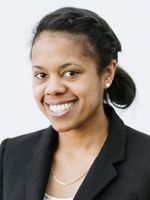Current News & Events
CNDS and brainSTIM Neuromodulation and Neuroimaging Relevant to Affective Disorders Speaker Series 2024
Speaker: Immanuel Elbau, MD, PhD, Assistant Professor of Psychiatry, Department of Psychiatry, Weill Cornell Medical College
Date: Wednesday, February 7th, 2024
Title: Longitudinal dense sampling of a patient undergoing ECT, with ME-fMRI
Speaker: Ishita Basu, PhD, Research Assistant Professor, Dept of Neurosurgery, College of Medicine, University of Cincinnati
Date: Wednesday, January 24th, 2024
Title: Prefrontal theta oscillations evoked by a cognitive load are suppressed in brain injury but enhanced in the anxious/depressed states
Speaker: Rina Zelmann, PhD, Department of Neurology, Center for Neurorecovery and Neurotechnology, Massachussetts General Hospital / Harvard Medical School
Title: Brain State Modulates Stimulation Responses or Stimulation Affects Brain Signatures?
Date: Wednesday, January 17th, 2024
Meet Dr. Catherine Norise, our very first brainSTIM fellow!

What is your educational/professional background?
I went to Haverford College for undergrad and completed medical school and a Master’s in translational research at the Perelman School of Medicine (University of Pennsylvania). After that, I completed my neurology residency at the University of Massachusetts where I served as Chief resident in my 4th year. Following this, I completed a clinical fellowship at the Penn Memory Center last year, and I am now a clinical postdoc fellow on the research side.
What sparked your interest in neuromodulation?
Thinking back, it all began in my sophomore year of college when there was a research opportunity where you could meet with various principal investigators at the University of Pennsylvania and work in their lab for a summer. At that time, I knew little about neurology and even less about neuromodulation, but ended up working in Penn’s Laboratory for Cognitive and Neural Stimulation (LCNS) for the summer to learn more. That summer planted a seed of interest in both neurology and neuromodulation, that though I did not recognize it at the time, would ultimately shape my career path. Since then, I have continued working with the LCNS in different capacities. I am fascinated by the therapeutic potential of neuromodulation, especially when explored in the setting of neurodegenerative diseases where therapies are very limited.
What are some projects you are currently working on?
Currently, I am working on several chapters of neuromodulation for a few books. My projects look at predictors of response to tDCS (transcranial direct current stimulation) and characterize the expected disease progression in persons with neurodegenerative aphasia. These projects would be contributing to my goal of applying for a NIH career development award in the near future.
What is one of your future research endeavors?
In the long term, I would like to work toward being able to therapeutically use TMS or tDCS in the setting of neurodegenerative disease (for language recovery – for example), since it is not currently FDA approved for that indication.
What have you enjoyed most about working with the brainSTIM team?
They are such great people, and it is a joy to come to work. It has been great to be around energetic and intelligent people who are all interested in moving this technology forward and learning what we don’t know together.
What do you see for the future of neuromodulation?
It is encouraging to see how far fields like psychiatry have come with the therapeutic use of neuromodulation therapeutically (such as the FDA’s approval of TMS in depression). More encouraging yet is how much more we know today than we did 10 years ago about the use of neuromodulation in, for example, post stroke recovery – what factors influence response to stimulation, what factors influence orientation of stimulation, which lesion characteristics have positive predictive factors for response to stimulation. Similar questions are being asked of the neurodegenerative disease population, the answers to which will be amongst the many fruitful pieces to be found in the future of neuromodulation.

